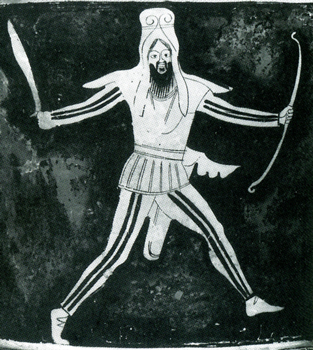MrRING
Android Futureman
- Joined
- Aug 7, 2002
- Messages
- 6,053
Third Salt Man discovered in northwestern Iran
TEHRAN, Jan. 17 (MNA) --
The remains of a skeleton of a man were recently discovered at the Chehrabad salt mine near Zanjan in northwestern Iran. The third Salt Man’s body was buried under a two-ton rock, Amir Elahi, the director of the excavation team at the mine, said on Monday.
Several items such as a leather sack full of salt, a clay tallow burner, two pairs of leather shoes, and two cow horns were also discovered near the skeleton, added Elahi.According to the director of the Zanjan Cultural Heritage and Tourism Department, Yahya Rahmati, the Salt Man was killed and buried by the two-ton rock, severely damaging the skeleton, but the items discovered beside him are in excellent condition.
“The newly discovered leather sack was full of crystals of salt and was completely tightened. This indicates that the owner was about to carry it out of the mine, but was suddenly crushed by the heavy rock, leaving him no chance to escape,” he added. “The discovery of the remains of the skeleton near the rock proves the theory about a mine collapse at a specific time,” he said, adding that although the three skeletons were discovered close to each other, more studies are required to accurately date the remains.
He also announced that two more old tunnels, which were the major passages of the mine, were discovered during the recent excavation.The second Salt Man was discovered at the Hamzehlu salt mine near Zanjan. The remains of the skeleton are almost perfect, and they include parts of the skull, jaw, both arms, as well as the left and right legs and feet.
Several pieces of wool cloth and a piece of a straw mat with a unique style of weaving were also discovered beside the second Salt Man. The remains are currently being kept at the Zanjan Cultural Heritage and Tourism Department. The second skeleton was found 30 to 40 meters from the place where the first Salt Man was discovered.
The first Salt Man, a miner whose body was preserved by the salt, lived over 1700 years ago. He was also a man between the ages of 35 and 40. His remains are currently being kept in a glass case at the National Museum of Iran in Tehran.
The first Salt Man’s withered face stares into the distance. He has long white hair and a beard and was discovered wearing leather boots and with some tools and a walnut in his possession.
Link is dead. The MIA news item can be accessed via the Wayback Machine:
https://web.archive.org/web/20080607122825/http://www.mehrnews.ir/en/NewsDetail.aspx?NewsID=149500
Last edited by a moderator:


